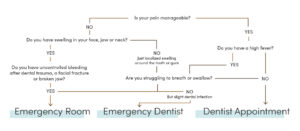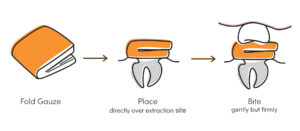¿Se puede conducir después de tomar gas de la risa? Consejos de seguridad para la sedación dental

Revisado por Dr. Dennis Rollins, DDO |
Julio de 2025 - 6 min Leer
Reviewed By Dr. Dennis Rollins, DDO | Julio 2025 - 6 min Read
Sí, la mayoría de la gente puede conducir con seguridad después de usar gas hilarante, porque sus efectos desaparecen casi inmediatamente una vez que se deja de inhalar el gas.
Esto es lo que suele ocurrir:
- Antes del tratamiento, un miembro del equipo de su dentista le colocará un puente nasal. Mientras usted respira normalmente, la pieza nasal le suministrará el gas hilarante, que le ayudará a sentirse relajado y tranquilo.
- El puente nasal permanecerá en su sitio mientras su dentista trabaja. Usted permanecerá despierto, receptivo y en control.
- Una vez finalizado el tratamiento, se retirará el puente nasal. Respirar oxígeno normal eliminará cualquier resto de gas.
- La mayoría de las personas se sienten normales y seguras para conducir en 3-5 minutos.
Lista de comprobación "listo para conducir
Después de la cita y antes de volver a casa, tómese su tiempo y hágase estas seis preguntas:
- ¿Me siento alerta y totalmente despierto?
- ¿Mi visión es clara y nada borrosa?
- ¿Ya no estoy aturdido, mareado o inestable?
- ¿No tengo náuseas ni molestias persistentes?
- ¿Puedo mover cómodamente la cabeza, el cuello y los brazos?
- ¿Me siento capaz de concentrarme y reaccionar con rapidez en caso necesario?
Si la respuesta a las seis preguntas es afirmativa, lo más probable es que puedas conducir sin peligro.

¿Qué ocurre si sigue sintiéndose mal?
Ante todo, no se preocupe. No todo el mundo responde a la sedación de la misma manera, y un pequeño número de pacientes experimentan efectos secundarios persistentes. A continuación te explicamos qué hacer si te ocurre eso.
- No intentes aguantar - Permanezca sentado en la sala de espera o en otro espacio seguro y espere a que desaparezcan los síntomas.
- Informe al personal - Dile a tu dentista o higienista cómo te sientes y pídeles tiempo de observación. Ellos te controlarán y te orientarán o tratarán si es necesario.
- Hidrátese lentamente - Bebe agua a sorbos para ayudar a tu cuerpo a recuperarse.
- Busque atención médica si los síntomas persisten - Si los mareos, las náuseas u otros síntomas preocupantes no mejoran, llame a su médico o al servicio de urgencias para descartar otras causas.
En la gran mayoría de los casos, los efectos persistentes del gas hilarante no son peligrosos si se tratan con cuidado. Mantenga la calma, sea paciente y comuníquese con su equipo dental.
Cómo prepararse para una cita dental con gases de la risa
Para prepararte para el éxito, sigue estos sencillos pasos.
- Coma algo ligero - Coma algo pequeño 1-2 horas antes de su cita. Evite los alimentos pesados, grasos o muy azucarados para reducir las probabilidades de náuseas.
- Hidrátese - Beba mucha agua de antemano. Limite la cafeína o el alcohol, que pueden aumentar la ansiedad y la deshidratación.
- Llevar ropa cómoda - Vístase con ropa holgada y no restrictiva que le ayude a relajarse.
- Anote todas las preguntas o preocupaciones - Esto puede ayudarle a comunicarse con claridad, incluso si tiende a ponerse nervioso al hablar con los dentistas y su personal.
- Contratar a un conductor de refuerzo - Haz saber a un amigo o familiar de confianza que podrías necesitar que te lleven en el improbable caso de que los efectos secundarios del gas de la risa persistan.
- Siga las instrucciones del dentista - Si su dentista le da instrucciones específicas previas al tratamiento, sígalas al pie de la letra.
Comparación del gas de la risa con otros métodos de sedación
El gas de la risa es la forma más común de sedación que utilizan los dentistas, pero no es la única.
El nombre técnico del gas de la risa es óxido nitroso. Cuando se inhala, este suave gas le ayuda a sentirse relajado y tranquilo, aunque permanece despierto y receptivo. Los efectos desaparecen casi siempre a los pocos minutos de terminar el tratamiento.
Algunos dentistas también ofrecen sedación oral. Estas pastillas le adormecen lo suficiente para que no sea plenamente consciente de lo que ocurre durante el tratamiento. Suelen utilizarse en pacientes moderadamente ansiosos o si la intervención es más larga o ligeramente más invasiva. La recuperación puede llevar más tiempo, por lo que suele ser necesario que alguien le lleve a casa.
La sedación intravenosa se administra por vía intravenosa. Este método le sume en un estado similar al sueño profundo. Es posible que no recuerde el procedimiento en absoluto y necesitará supervisión y un conductor después. La sedación IV se utiliza normalmente para procedimientos más extensos y para los pacientes con ansiedad dental severa o una fobia dental.

¿Qué tipo de sedación es la adecuada para usted?
Tenga en cuenta su nivel de ansiedad y el tipo de tratamiento al que se va a someter. Si su ansiedad es leve y la intervención es breve y sencilla, probablemente bastará con gas hilarante. Si su ansiedad es más grave o el procedimiento es más complicado, la sedación oral o incluso intravenosa puede ser útil.
En cualquier caso, lo mejor es que consultes con tu dentista para crear el plan adecuado.
Nota sobre la ansiedad dental
Muchos pacientes se sienten ansiosos ante los procedimientos dentales, y los equipos dentales están formados y dispuestos a ayudarle a permanecer lo más tranquilo y cómodo posible durante toda su cita. No hay que avergonzarse por solicitar sedación, por hacer todas y cada una de las preguntas sobre el tratamiento o por tomarse su tiempo para recuperarse después de la intervención.
Asegúrese de encontrar un dentista que ofrezca los métodos ansiolíticos adecuados para usted, y tenga en cuenta que cuidar la salud dental contribuye significativamente a la salud general.
Si necesita ayuda para encontrar un dentista en su zona, haga clic en aquí o llámenos al (888) 597-3896.
¿Necesita ayuda para encontrar un dentista?
Información relacionada

¿Cuánto cuesta una visita al dentista sin seguro? Costes exactos
A continuación encontrará un desglose de los gastos de bolsillo típicos de los procedimientos dentales más comunes, junto con las razones que los justifican. Tenga en cuenta que estos costes pueden variar significativamente en función de su ubicación, la experiencia del dentista, los materiales utilizados y la complejidad del procedimiento.

¿Debe acudir a urgencias por dolor de muelas? Guía rápida
La conveniencia de acudir a urgencias por dolor de muelas depende de la gravedad del dolor y de los demás síntomas que experimentes. Sigue leyendo y te ayudaremos a decidir cómo aliviarte.

Cómo detener el sangrado después de la extracción del diente: Consejos fáciles para un alivio inmediato
Tras la extracción de un diente, es normal que se produzca una hemorragia en la zona, que suele remitir en 2-3 horas. Durante las primeras 24 horas suele seguir supurando suavemente (saliva rosada). A continuación encontrarás consejos para ayudar a detener la hemorragia y cómo diferenciar entre una recuperación normal y los signos que indican que debes llamar a tu dentista.
